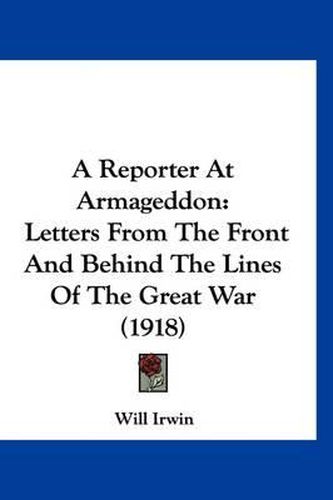Readings Newsletter
Become a Readings Member to make your shopping experience even easier.
Sign in or sign up for free!
You’re not far away from qualifying for FREE standard shipping within Australia
You’ve qualified for FREE standard shipping within Australia
The cart is loading…






Purchase of this book includes free trial access to www.million-books.com where you can read more than a million books for free. Excerpt from book: Section 3CHAPTER III FRANCE AGAIN! Pakis, April 20th. The journey from Madrid to Paris is rather easy, as European travel goes nowadays. Certain points in France that were only five hours from Paris before the war are now twenty-four hours away, even with good luck. But you leave Madrid at ten o'clock Monday evening and, unless you strike trouble at the border, you reach Paris in time for breakfast on Wednesday?two nights and a day. There are textit{wagons-lits, or sleeping cars, for both nights?if you can get a berth. Reservations on the Spanish train, as far as the border, are easy. The second night comes harder. Though I applied for reservations on the French section six days in advance, I was told the train had been sold out for a week. As it turned out, we had at least a place to lie down; for at about eleven o ‘clock the woman train porter entered the first-class compartment of the day coach, where we were trying to make ourselves comfortable for the night, with the news that we might have two textit{couchettes forward. I did not know exactly what a textit{couchette was; but I followed.On European railroads, as the untraveled American may not know, the sleeping car is a thing separate from the day coach. When the management thinks it is time for the passengers to go to bed, textit{wagons-lits are switched on to the train and the passengers are transferred from the day coach. These sleeping cars are divided into tiny compartments, each with two beds. It appeared that, in the present condition of things, the sleeping cars are short of bed linen. The portress had a compartment without sheets or blankets; but we might lie down on the bare berths. In our clothes, and covered with fur coats against the cold of this villainously raw spring, we passed a comfortable night, as nights go in wartime travel. …
$9.00 standard shipping within Australia
FREE standard shipping within Australia for orders over $100.00
Express & International shipping calculated at checkout
Purchase of this book includes free trial access to www.million-books.com where you can read more than a million books for free. Excerpt from book: Section 3CHAPTER III FRANCE AGAIN! Pakis, April 20th. The journey from Madrid to Paris is rather easy, as European travel goes nowadays. Certain points in France that were only five hours from Paris before the war are now twenty-four hours away, even with good luck. But you leave Madrid at ten o'clock Monday evening and, unless you strike trouble at the border, you reach Paris in time for breakfast on Wednesday?two nights and a day. There are textit{wagons-lits, or sleeping cars, for both nights?if you can get a berth. Reservations on the Spanish train, as far as the border, are easy. The second night comes harder. Though I applied for reservations on the French section six days in advance, I was told the train had been sold out for a week. As it turned out, we had at least a place to lie down; for at about eleven o ‘clock the woman train porter entered the first-class compartment of the day coach, where we were trying to make ourselves comfortable for the night, with the news that we might have two textit{couchettes forward. I did not know exactly what a textit{couchette was; but I followed.On European railroads, as the untraveled American may not know, the sleeping car is a thing separate from the day coach. When the management thinks it is time for the passengers to go to bed, textit{wagons-lits are switched on to the train and the passengers are transferred from the day coach. These sleeping cars are divided into tiny compartments, each with two beds. It appeared that, in the present condition of things, the sleeping cars are short of bed linen. The portress had a compartment without sheets or blankets; but we might lie down on the bare berths. In our clothes, and covered with fur coats against the cold of this villainously raw spring, we passed a comfortable night, as nights go in wartime travel. …